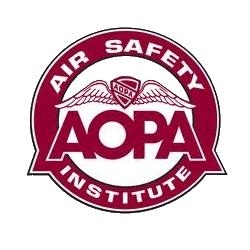AOPA Foundation’s Air Safety Institute Report Indicates
No Safety Impact From New Technology
The increase in glass panel cockpits in general aviation
aircraft has not had a dramatic impact on safety, according to new
research by the Aircraft Owners and Pilots Association
Foundation’s Air Safety Institute.

Glass panels were introduced first in higher-performance
aircraft that are typically used for business and personal travel,
and have since become standard in virtually all production
aircraft. Recently certified designs, such as the Cirrus SR22,
transitioned very quickly to glass panels. Very few new aircraft of
any type are delivered with analog gauges.
The accident rate in lower-powered aircraft, with or without
glass panels, is higher, but the accidents are less likely to be
fatal. “What you have on the panel doesn’t matter
nearly as much as what you’re flying and how you’re
flying it,” said ASI Manager of Aviation Safety Analysis
David Jack Kenny.
The Accident Record of Technologically Advanced Aircraft special
report tracked more than 20,000 certified piston aircraft
manufactured between 1996 and 2010, a total fleet with roughly
equal proportions of glass and analog gauges. The most dramatic
differences in the accident record were found among three distinct
groups.
One, single-engine fixed-gear models with less than 200
horsepower had the highest accident rates but lowest fatality
rates. Two, complex or high-performance models certified before
1980 had a lower accident rate, but the rate of fatal accidents was
nearly identical. Three, the accident rate of models certified
after 1988 with 200 horsepower or more was more than 20 percent
higher than comparable legacy models. The fatal accident rate in
the newer models was more than 60 percent higher, in part because
these aircraft likely spend comparatively more time flying at night
and/or in IMC.
Overall, glass cockpit displays had a “negligible”
effect on the accident patterns among similar aircraft, though data
suggests they set themselves apart in the traffic pattern.
“We consistently see more accidents during takeoffs,
landings, and go-arounds in glass panel airplanes,” Kenny
said.
The difference is smallest among the low-power models, and the
reason for it remains unclear. One possibility is that analog
gauges can be more easily interpreted during rapid changes in
airspeed and altitude. Pilots with glass panels may also be
“spending more time staring at the displays instead of
looking outside,” Kenny said. On the other hand, glass panels
may have advantages when it comes to terrain avoidance, and
avoiding VFR flight into IMC, but “the numbers are small
enough to leave doubt about whether this is a real effect,”
he added.
Airmanship still matters much more than equipment.
“Don’t count on machinery to save you from bad
judgment,” Kenny said. Pilots who fly in technologically
advanced cockpits should learn them thoroughly because the lack of
standardization and model-specific training remains an obstacle. In
the days before glass, instrument interpretation skills learned in
one aircraft transferred easily to another; there are many
variations among glass panel displays. ASI recommends that pilots
take time to master the systems, preferably on the ground.
 Unfortunate... ANN/SportPlane Resource Guide Adds To Cautionary Advisories
Unfortunate... ANN/SportPlane Resource Guide Adds To Cautionary Advisories ANN FAQ: Turn On Post Notifications
ANN FAQ: Turn On Post Notifications ANN's Daily Aero-Term (04.29.24): Visual Approach Slope Indicator (VASI)
ANN's Daily Aero-Term (04.29.24): Visual Approach Slope Indicator (VASI) ANN's Daily Aero-Term (04.28.24): Airport Marking Aids
ANN's Daily Aero-Term (04.28.24): Airport Marking Aids ANN's Daily Aero-Linx (04.28.24)
ANN's Daily Aero-Linx (04.28.24)



